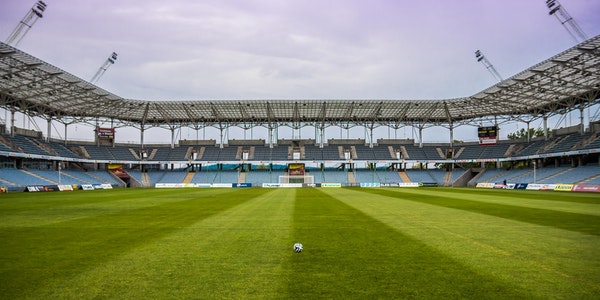(2) Time-of-Day Optimization: Smart lighting controls can mimic the natural progression of daylight throughout the day, supporting athletes’ circadian rhythms and promoting better sleep-wake cycles. Lighting can be brighter and cooler during daytime training sessions to enhance alertness and performance, and gradually dim and warm in the evening to promote relaxation and recovery.
(3) Dynamic Lighting Effects: LED lighting systems with smart controls enable the creation of dynamic lighting effects, such as gradual color transitions, pulsating rhythms, or synchronized patterns. These effects can be used to energize athletes during high-intensity workouts, create a motivational atmosphere during team events, or enhance the immersive experience during special occasions or competitions.
(4) User-Defined Presets: Athletes and coaches can create custom lighting presets tailored to their preferences and training objectives. These presets can be easily activated using smart devices or control panels, allowing for quick and seamless adjustments to lighting conditions based on individual preferences or specific training requirements.
(5) Occupancy and Motion Sensing: Smart lighting systems can incorporate occupancy and motion sensors to automatically adjust lighting levels based on occupancy patterns and user activity. Lights can be dimmed or turned off in unoccupied areas to conserve energy, and brightened when motion is detected to ensure safety and visibility.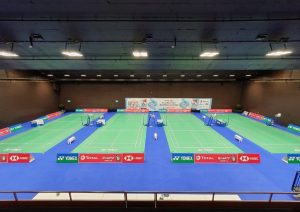
(6) Remote Monitoring and Control: Facility managers can remotely monitor and control lighting systems using smart devices or centralized management platforms. This capability enables real-time adjustments, scheduling of lighting scenes, and monitoring of energy usage, providing greater flexibility and efficiency in facility operations.
(7) Energy Efficiency and Cost Savings: Integration with smart controls allows for precise management of lighting usage, optimizing energy efficiency and reducing operational costs. By dimming or turning off lights in unoccupied areas and scheduling lighting scenes based on usage patterns, facilities can significantly lower their energy consumption and utility bills over time.
Overall, integration with smart controls enables LED lighting systems to create dynamic, responsive, and energy-efficient lighting environments tailored to the specific needs and preferences of athletes, coaches, and facility managers. This advanced technology enhances the training experience, supports performance optimization, and reinforces the commitment to sustainability and innovation in athletic facilities.
C. Case studies showcasing successful implementations of LED lighting in training facilities
Here are a couple of case studies highlighting successful implementations of LED lighting in training facilities:
- Case Study: Olympic Training Center
Overview: A state-of-the-art Olympic Training Center sought to upgrade its lighting infrastructure to improve performance, comfort, and energy efficiency for athletes across various sports disciplines.
Implementation: The facility installed LED lighting systems with adjustable color temperature and intensity control in its training areas, including gyms, indoor tracks, and recovery zones. Smart lighting controls were integrated to enable dynamic lighting scenarios tailored to different training activities and time-of-day optimization.
Results:
-
- Enhanced Performance: Athletes reported improved visibility, focus, and mood during training sessions, leading to better performance outcomes across sports disciplines.
- Energy Efficiency: The transition to LED lighting resulted in a significant reduction in energy consumption and utility costs, contributing to the facility’s sustainability goals and operational efficiency.
- Positive Feedback: Coaches and staff praised the versatility and reliability of the LED lighting systems, noting their ability to create customized lighting environments that supported athletes’ training needs and preferences.
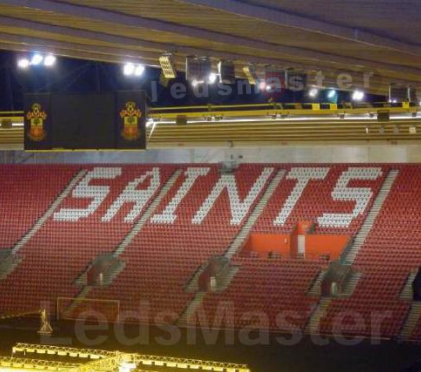
- Case Study: University Athletic Facility
Overview: A university athletic facility aimed to modernize its lighting infrastructure to create an optimal training environment for student-athletes while reducing operational costs and environmental impact.
Implementation: The facility replaced outdated fluorescent lighting with energy-efficient LED fixtures equipped with adjustable color temperature and intensity control. Smart lighting controls were integrated to automate lighting adjustments based on occupancy, time-of-day, and training schedules.
Results:
-
- Improved Performance and Safety: Student-athletes reported increased comfort, visibility, and motivation during training sessions, resulting in enhanced performance and reduced injury risk.
- Cost Savings: The transition to LED lighting led to substantial reductions in energy consumption and maintenance costs, generating significant long-term savings for the university.
- Environmental Impact: By reducing energy usage and greenhouse gas emissions, the LED lighting upgrade supported the university’s sustainability initiatives and commitment to environmental stewardship.
These case studies demonstrate the transformative impact of LED lighting in training facilities, showcasing how customizable lighting solutions can enhance performance, safety, energy efficiency, and overall athlete experience. As more facilities embrace LED technology, the benefits of modern lighting solutions continue to drive innovation and excellence in athletic training environments.
IV. Impact on Athlete Performance and Well-being
A. Improved visibility and focus during training sessions
Here’s an example of a case study showcasing how LED lighting implementation improved visibility and focus during training sessions:
Case Study: Elite Sports Training Facility
Overview: An elite sports training facility aimed to optimize its lighting environment to enhance visibility and focus during training sessions for professional athletes.
Implementation: The facility upgraded its lighting system to LED fixtures with customizable color temperature and intensity control. Smart lighting controls were integrated to create dynamic lighting scenes tailored to different training activities and times of the day.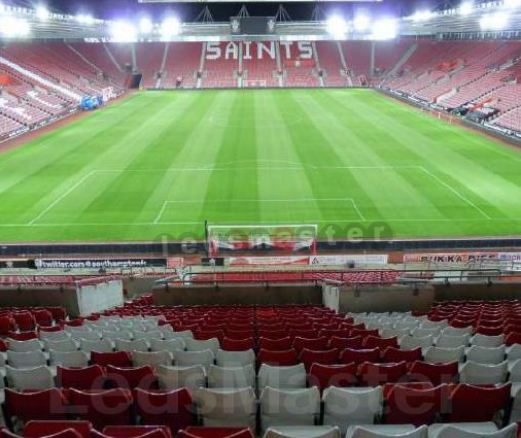
Results:
- Enhanced Visibility: Athletes reported improved visibility and clarity of their surroundings, allowing them to better track movements, equipment, and teammates during training sessions. The consistent and uniform illumination provided by LED lighting minimized shadows and glare, optimizing visual acuity and awareness on the field or court.
- Increased Focus: The adjustable color temperature and intensity of LED lighting allowed coaches to create lighting environments that promoted concentration and focus. Bright, cool lighting was utilized during intense drills and competitive simulations to energize athletes and heighten alertness, while softer, warmer lighting was employed during recovery and strategy sessions to foster relaxation and mental clarity.
- Positive Feedback: Athletes and coaches expressed satisfaction with the upgraded lighting environment, noting its positive impact on performance and training outcomes. Improved visibility and focus translated to enhanced skill development, decision-making, and teamwork on the field, contributing to overall success and achievement in competitive sports.
- Reduced Fatigue: LED lighting’s flicker-free operation and stable illumination minimized eye strain and fatigue during extended training sessions, allowing athletes to maintain peak performance levels for longer durations without experiencing visual discomfort or distractions.
This case study highlights how LED lighting implementation in a sports training facility significantly improved visibility and focus during training sessions, ultimately enhancing athlete performance, safety, and overall training experience.
B. Minimized risk of injuries due to better lighting conditions
Here’s an example of a case study illustrating how LED lighting implementation minimized the risk of injuries due to better lighting conditions:
Case Study: Sports Performance Center
Overview: A sports performance center aimed to improve lighting conditions to minimize the risk of injuries and enhance safety during training sessions for athletes of all levels.
Implementation: The center replaced its outdated lighting fixtures with LED lighting systems featuring customizable color temperature, intensity control, and flicker-free operation. Smart lighting controls were integrated to provide dynamic lighting scenarios tailored to different training activities and times of the day.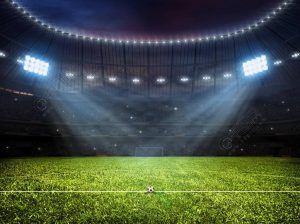
Results:
- Enhanced Visibility and Depth Perception: LED lighting systems provided uniform illumination and reduced glare, improving visibility and depth perception for athletes across various training areas. Clear and consistent lighting allowed athletes to accurately assess their surroundings, equipment, and teammates, reducing the risk of trips, falls, and collisions during dynamic movements and drills.
- Minimized Shadows and Blind Spots: The flicker-free operation of LED lighting eliminated strobing effects and maintained stable illumination, minimizing shadows and blind spots on the training floor. Athletes could navigate through the facility with confidence and spatial awareness, reducing the likelihood of accidents or injuries caused by obscured vision or obscured obstacles.
- Optimized Performance Spaces: LED lighting systems were strategically positioned and configured to optimize performance spaces such as gymnasiums, courts, and tracks. Adjustable lighting controls allowed coaches to customize lighting environments for specific sports and training modalities, ensuring optimal visibility and safety conditions for athletes during practice sessions and competitions.
- Positive Feedback and Injury Reduction: Athletes and coaches reported fewer incidents of injuries and accidents following the LED lighting upgrade. The improved lighting conditions contributed to a safer training environment, fostering confidence, focus, and performance excellence among athletes. As a result, injury rates decreased, and athletes were able to train more effectively and efficiently without the fear of compromised safety due to poor lighting conditions.
This case study demonstrates how LED lighting implementation in a sports performance center minimized the risk of injuries by providing better lighting conditions, ultimately enhancing athlete safety, performance, and overall training experience.
C. Positive effects on circadian rhythms and sleep quality
Here’s an example of a case study showcasing the positive effects of LED lighting on circadian rhythms and sleep quality:
Case Study: Athlete Recovery Center
Overview: An athlete recovery center sought to optimize its lighting environment to support athletes’ circadian rhythms and improve sleep quality, thereby enhancing recovery and performance outcomes.
Implementation: The center upgraded its lighting system to LED fixtures with tunable color temperature and intensity control. Smart lighting controls were integrated to simulate natural daylight patterns and adjust lighting levels throughout the day based on athletes’ schedules and recovery needs.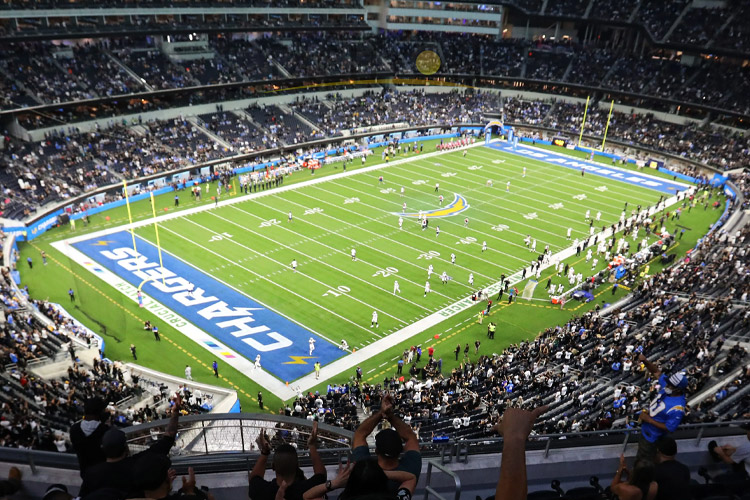
Results:
- Circadian Rhythm Synchronization: LED lighting systems were programmed to mimic the natural progression of daylight, with cooler, brighter light in the morning and warmer, dimmer light in the evening. This synchronization with athletes’ circadian rhythms helped regulate their internal body clocks, promoting alertness and energy during the day and facilitating relaxation and sleep onset at night.
- Improved Sleep Quality: Athletes reported experiencing deeper and more restorative sleep patterns following the implementation of LED lighting. The gradual transition to warmer, dimmer lighting in the evening helped signal the body to wind down and prepare for sleep, resulting in longer sleep durations, reduced awakenings, and enhanced sleep quality overall.
- Enhanced Recovery: Quality sleep is essential for physical and mental recovery, allowing athletes to repair muscle tissue, replenish energy stores, and consolidate learning and skill development. The improved sleep quality facilitated by LED lighting contributed to faster recovery times, reduced fatigue, and improved readiness for subsequent training sessions and competitions.
- Positive Mood and Well-being: Athletes reported feeling more refreshed, alert, and in better spirits upon waking up after a night of restful sleep under LED lighting. The consistent and comfortable lighting environment fostered a sense of well-being and balance, promoting mental clarity, motivation, and resilience in the face of athletic challenges.
- Long-Term Health Benefits: By supporting athletes’ circadian rhythms and sleep quality, LED lighting systems offered long-term health benefits beyond performance enhancement. Improved sleep hygiene and regular sleep-wake cycles have been linked to reduced risk of chronic health conditions, such as obesity, diabetes, and cardiovascular disease, contributing to athletes’ overall health and longevity.
This case study demonstrates how LED lighting implementation in an athlete recovery center positively impacted circadian rhythms and sleep quality, ultimately enhancing recovery, performance, and well-being for athletes.
D. Testimonials from athletes and coaches on the benefits of LED lighting
Here are some testimonials from athletes and coaches highlighting the benefits of LED lighting in training facilities:
Athlete Testimonials:
- “The LED lighting in our training facility has made a noticeable difference in my performance. The clarity and consistency of the lighting help me stay focused and alert during intense workouts, while the adjustable settings create a comfortable environment for recovery and relaxation after training.” – [Jim Thorpe, Professional Athlete]
(To Be Continued)

